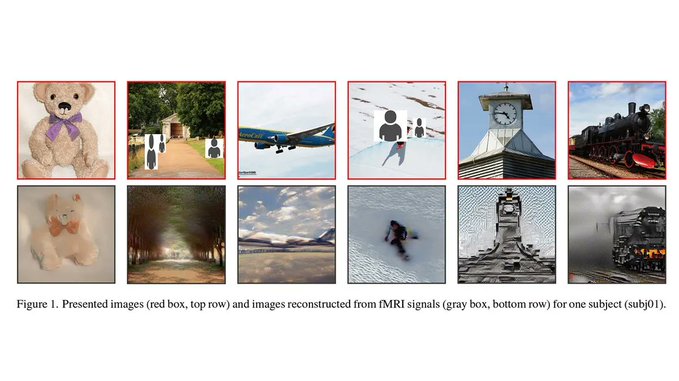
What if an AI could interpret your imagination, turning images in your mind’s eye into reality? While that sounds like a detail in a cyberpunk novel, researchers have now accomplished exactly this, according to a recently-published paper.
Researchers found that they could reconstruct high-resolution and highly accurate images from brain activity by using the popular Stable Diffusion image generation model, as outlined in a paper published in December. The authors wrote that unlike previous studies, they didn’t need to train or fine-tune the AI models to create these images.
The researchers—from the Graduate School of Frontier Biosciences at Osaka University—said that they first predicted a latent representation, which is a model of the image’s data, from fMRI signals. Then, the model was processed and noise was added to it through the diffusion process. Finally, the researchers decoded text representations from fMRI signals within the higher visual cortex and used them as input to produce a final constructed image.
The researchers wrote that a few studies have produced high-resolution reconstructions of images but it was only after training and fine-tuning generative models. This resulted in limitations because training complex models are challenging and there are not many samples in neuroscience to work with. Prior to this new study, no other researchers had tried using diffusion models for visual reconstruction.
This study was a peek into the internal processes of diffusion models, the researchers concluded, saying that the study was the first to provide a quantitative interpretation of the model from a biological perspective. For example, there is a diagram that the researchers created showing the correlation between stimuli and noise levels in the brain. The higher-level the stimuli, the higher-level the noise level would be, and the higher resolution the image would be. In another diagram, the researchers show the engagement of different neural networks in the brain and how it would de-noise an image to reconstruct it.
